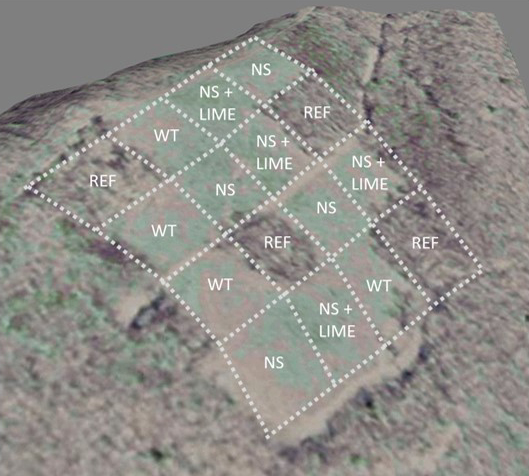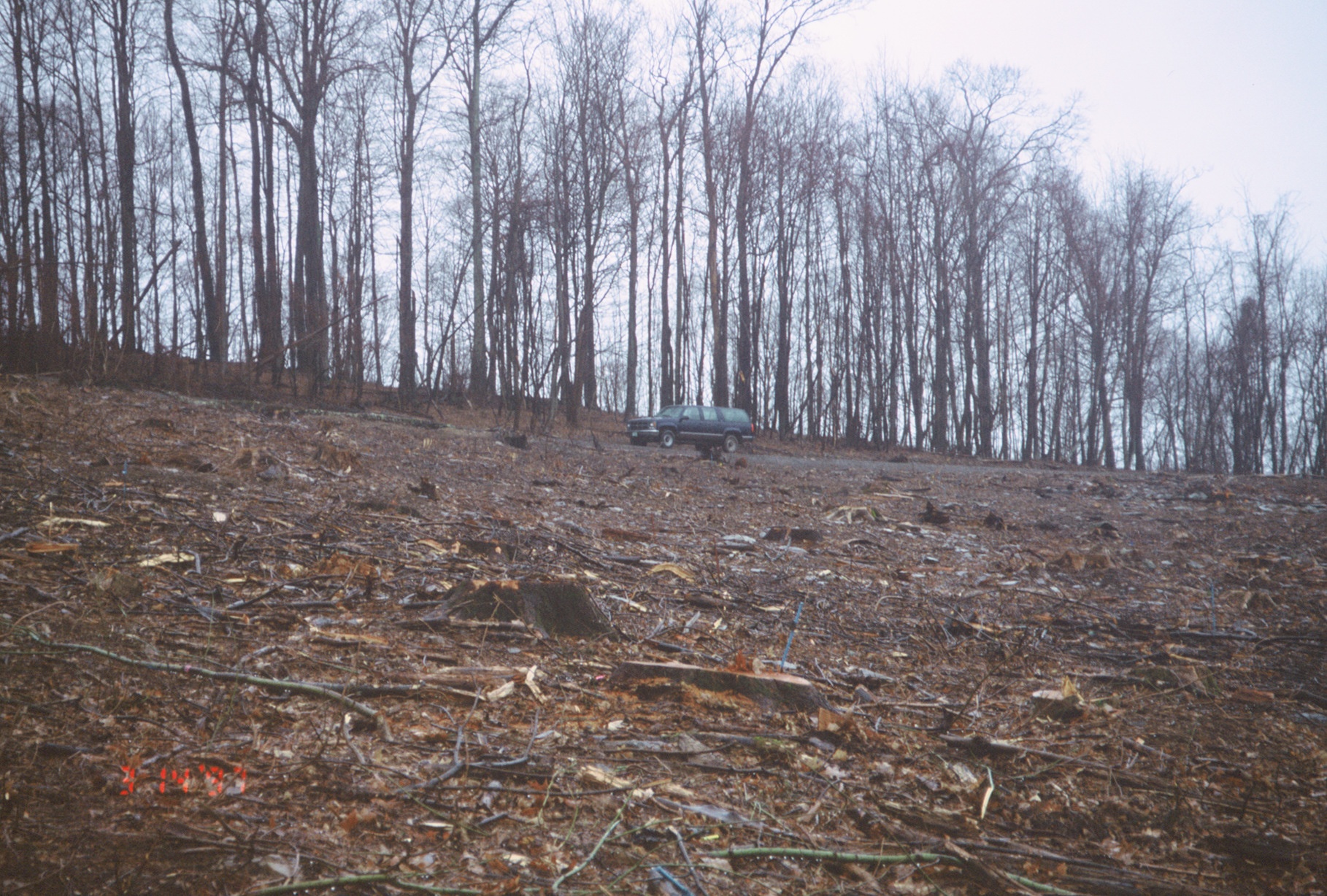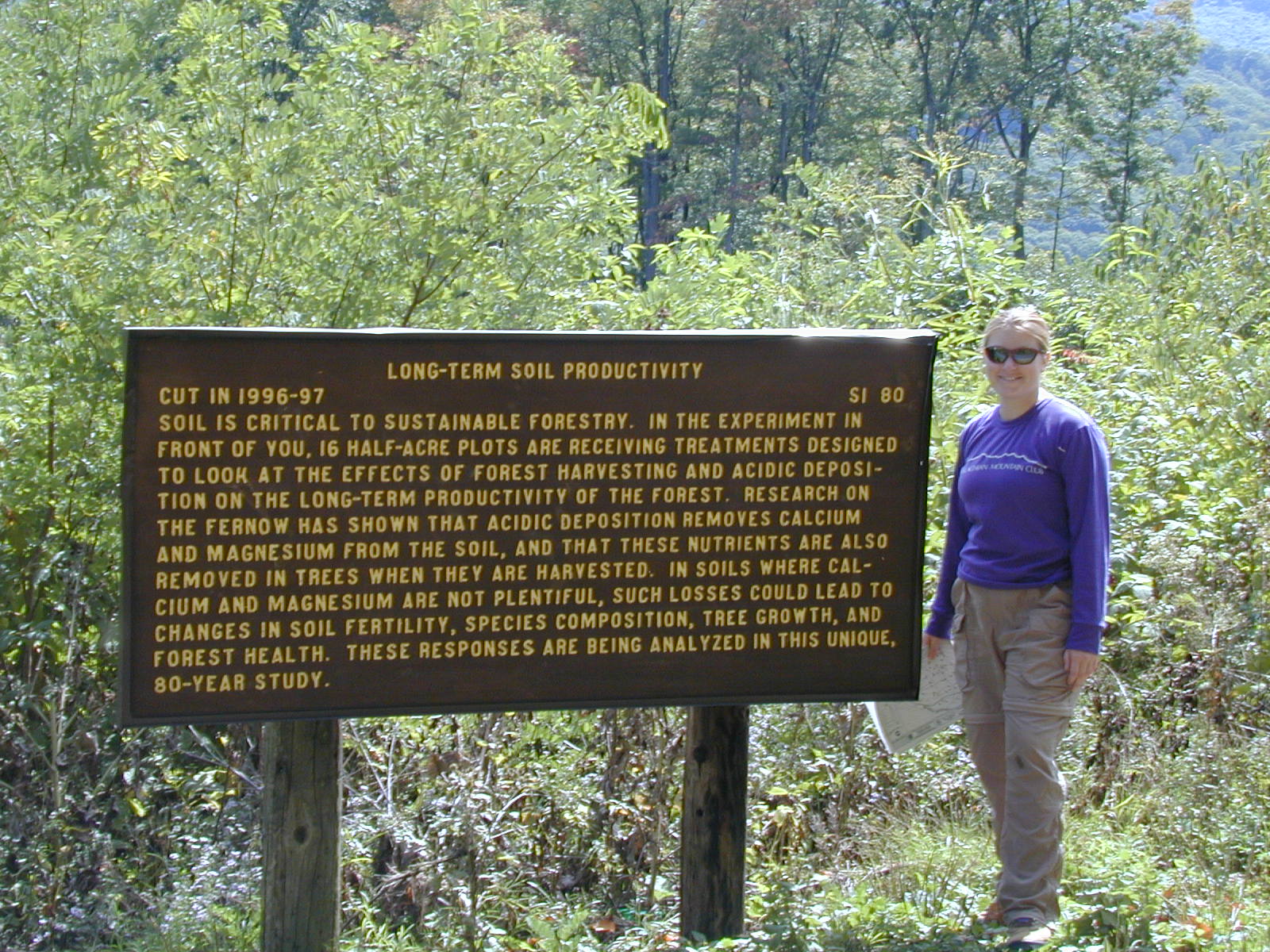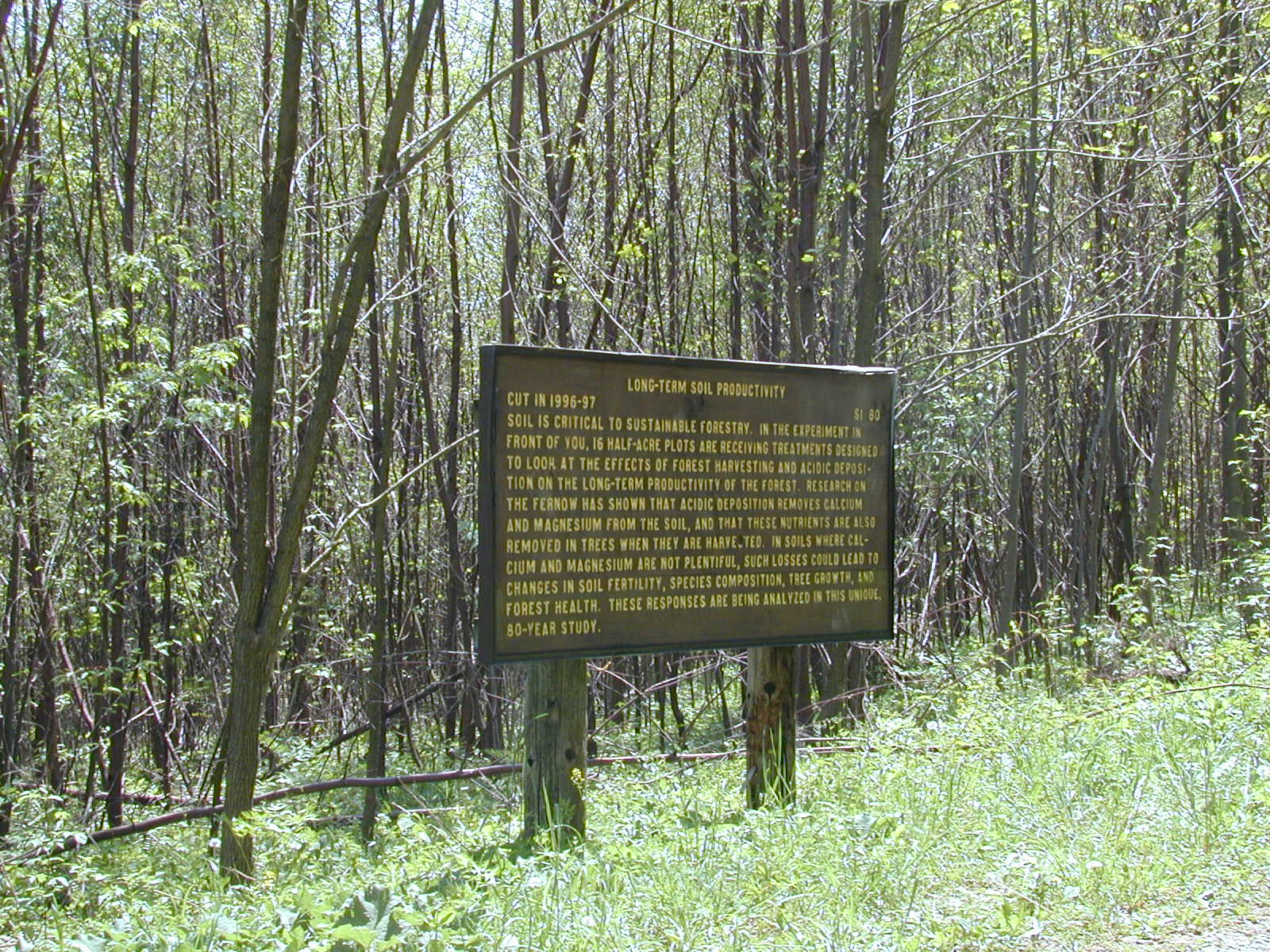
Forest Ecosystems In A Changing World
Aerial view of LTSP experiment. WT = whole-tree harvesting; NS = whole-tree harvesting + ammonium-sulfate;NS+ LIME = whole-tree harvesting + ammonium-sulfate + dolomitic lime; REF = no treatment
LTSP plots in 1997 - shortly after the whole harvesting was completed.
LTSP plots in 1999.
LTSP plots in 2005.
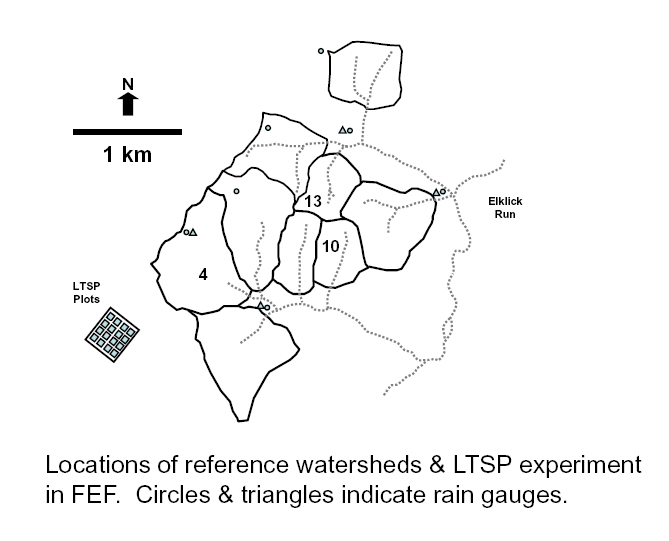 Long-Term Soil Productivity (LTSP) Experiment
Long-Term Soil Productivity (LTSP) Experiment
Results from the long-term whole-watershed acidification experiment at the Fernow Experimental Forest, suggest that acid deposition may deplete the pool of base cations (esp. Ca++ & Mg++) in sensitive forest soils. This raises the concern that chronic acid deposition may diminish long-term soil fertility and forest productivity. To address these concerns, the LTSP experiment at FEF was initiated in 1996 and is planned to last 80 years (Adams et al. 2004).
This experiment is located 1.6 km SW of whole-watershed acidification experiment (WS 3) at an elevation of ~800m. The site has a south-east aspect and slopes ranging from 15-31%. The experimental design consists of 16 plots (0.2 ha in size) that receive one of four treatments: (1) whole-tree harvesting (removal of all aboveground biomass, WT plots); (2) whole-tree harvesting + ammonium-sulfate fertilization (WT+NS plots); (3) whole-tree harvesting + ammonium-sulfate fertilization + addition of dolomitic lime (WT+NS+Lime plots); and (4) no treatment (Reference plots). Ammonium sulfate is applied three times per year at the same rate, and at the same time, as the whole-watershed acidification experiment. To test whether simple amelioration techniques can mitigate base cation (Ca++ & Mg++) losses, dolomitic lime is applied every other year at a rate of 22.5 kg Ca++ /ha*yr to four of the experimental plots that also receive ammonium sulfate additions. This rate of dolomite addition is about twice the rate at which Ca++ is lost in stream water from a nearby reference watershed (WS 4).
